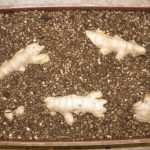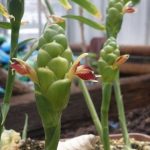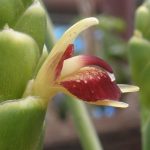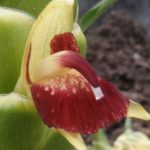
Ginger is used in many Christmas recipes due to its warming properties. Records of cultivation in China date back to 5000BC. During the 13th and 14th centuries, it was second only to pepper (Piper nigrum) in its popularity in Europe and at the time of Henry VIII it was believed to ward off plague (Ravindrun and Babu, 2005; Purseglove, 1981). More recently, research has taken place into the medicinal properties of the plant and exciting new therapeutic applications are still being found. For a comprehensive view of the history and uses of ginger you can read Jan Walpole’s blog on our Tropical Biodiversity site.
The heat produced from ginger rhizomes is from a group of chemicals called gingerols. The Compound Interest website tells us “The pungency can be attributed to the presence of gingerols; one of the main culprits here is the compound [6]-gingerol. This particularly chemical is not too distant from capsaicin, the compound that gives chillies their spiciness, and piperine, found in black pepper.”. This heat and the topical application of peeled ginger rhizome to horses led to the phrase to ginger up.
We’ve been growing ginger in the tropical glasshouse here for many years and it flowers from time to time.





